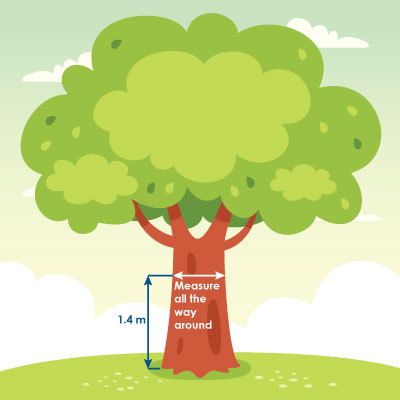Do I need a permit to prune my tree?
No. Regular care and best practice maintenance of native trees do not require a permit. If you are unsure, consult with a qualified tree professional before maintaining your tree.
Why was my application rejected?
The most common reasons an application may be rejected include, but not limited to:
- The tree is healthy.
- The planned work would harm the surrounding ecosystem, such as affecting erosion, flood control, or migratory birds.
- The tree is an endangered or threatened species.
- The tree is in an Environmentally Sensitive Area.
- A work plan (rezoning, a new subdivision, etc.) for the property has been submitted to the Municipality but has not been finalized.
Review the full Private Tree By-law for more detailed information.
What if my tree overlaps with my neighbour?
If your tree’s trunk is solely on your property, then you are considered the owner of the property and do not need to speak with your neighbor.
If the tree’s trunk is growing on or over the boundary line between your property and your neighbour’s property, then under the Ontario Forestry Act it is considered shared property.
You must have signed consent from that neighbour included in your permit application that they agree to remove and/or injure the shared tree.
What if my neighbour's tree is hazardous?
Start with a friendly neighbourly discussion about the problem tree. If you cannot come to a mutual agreement, you may submit a Clean & Clear Yards/ Property Standards Complaint form. Please note that any investigation as a result of this form submission may not mean that any action can be taken by the Municipality.
When do I need an arborist report?
The Municipality of Kincardine may request an arborist’s report as part of your application if they feel they need an expert opinion before approving or denying your application.
Where do I find an arborist?
There are several arborists working in the Municipality of Kincardine area. You can do a Google search or check the yellow pages of your phone book.
How much does an arborist cost?
Arborists’ fees can vary widely depending on a wide range of factors. For an exact price, contact a local arborist and ask for a quote.
What is a site plan?
A site plan is a diagram of your property, along with any proposed changes/improvements you’d like to make. Site plans are used to make sure that construction projects follow the Municipality’s zoning codes.
What is a tree replacement plan?
When a tree is removed, it creates a hole in the canopy. A tree replacement plan lays out how many trees are needed to replace the removed tree, and where they will be planted.
The Municipality of Kincardine can require an applicant to replant or replace a tree in the same or alternate location with the geographical limits of the Municipality. These details will be provided as part of the permit.

